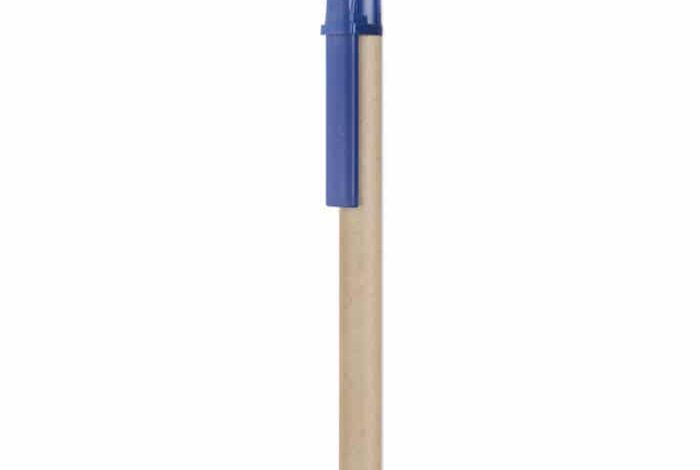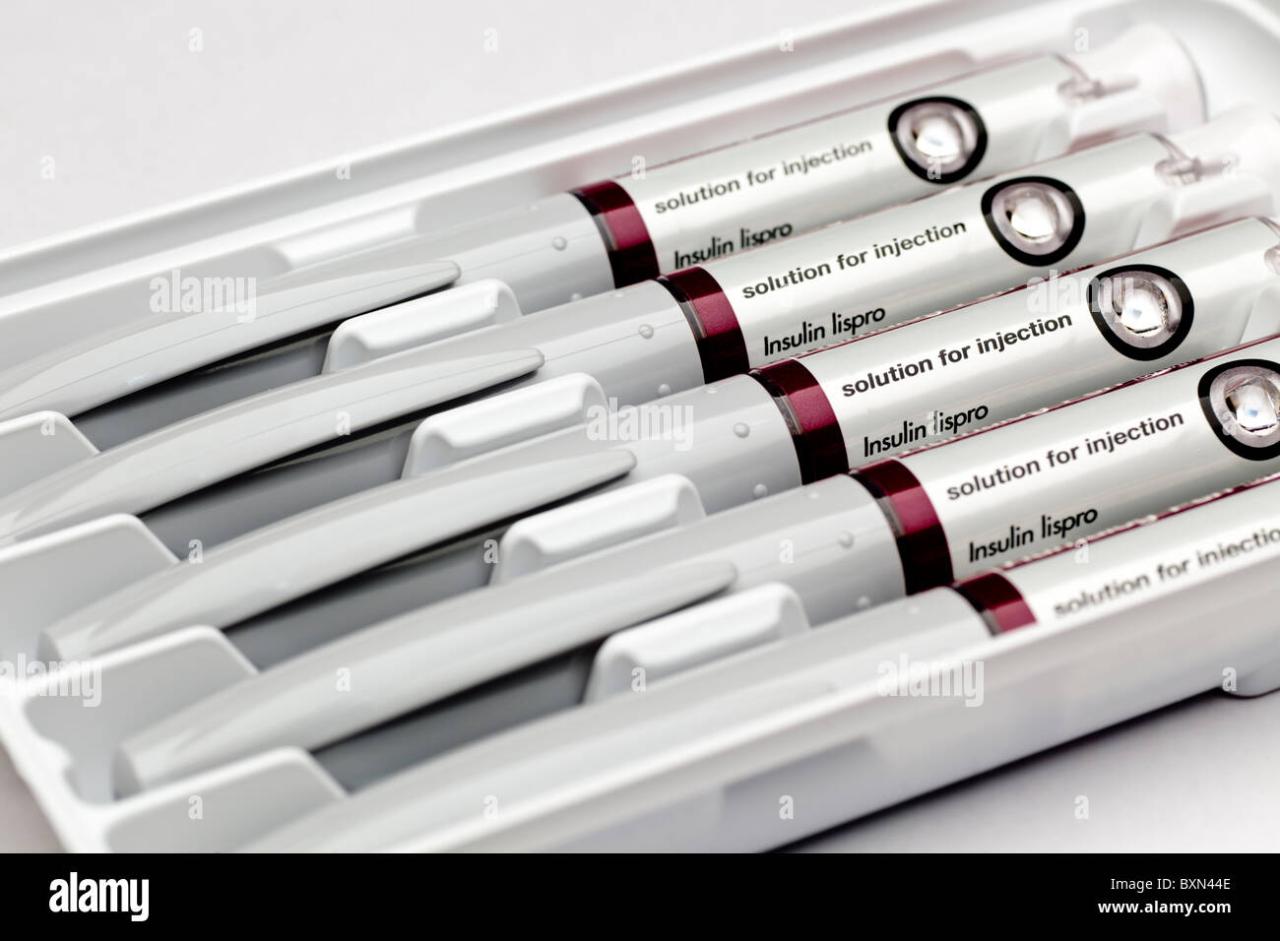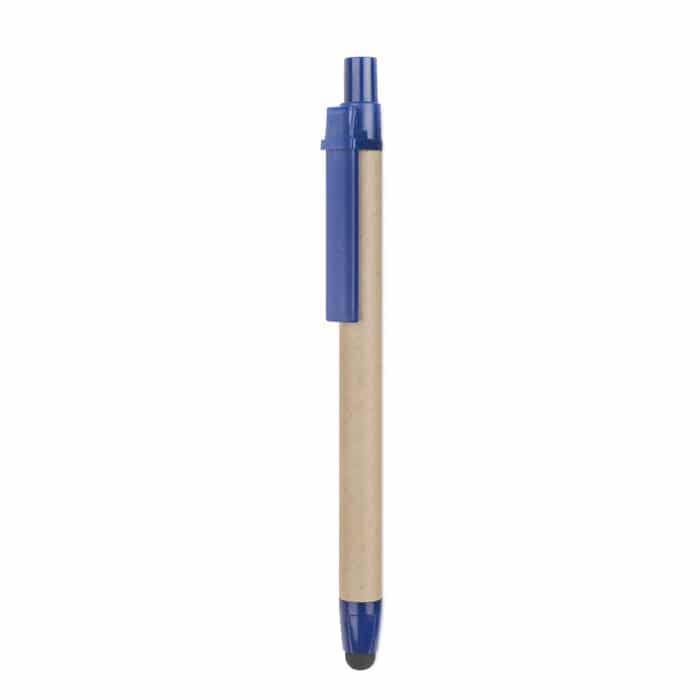
Insulin Pens Inhalers Plastics Recycling A Sustainable Solution
Insulin pens inhalers plastics recycling is a critical issue facing both healthcare and the environment. Millions rely on these devices, yet their plastic components often end up in landfills, contributing to pollution. This exploration delves into the design, usage, and potential solutions for sustainable practices in the manufacturing, use, and disposal of these medical devices.
From examining various types of insulin pens and inhalers to understanding the types of plastics used and the recycling challenges, this comprehensive guide provides a thorough overview of the entire lifecycle of these essential devices. We’ll also explore innovative alternatives to plastic, offering a glimpse into the future of sustainable healthcare practices.
Insulin Pens and Inhalers

Insulin pens and inhalers have revolutionized the management of chronic conditions like diabetes and respiratory illnesses. These devices offer precision, convenience, and improved patient compliance, dramatically impacting the quality of life for millions. The advancements in technology have led to smaller, more user-friendly designs, enabling better self-management and reduced anxiety surrounding medication administration.These devices represent significant progress in medical technology, improving patient outcomes and overall well-being.
This section delves into the intricacies of insulin pens and inhalers, exploring their various types, functionalities, and the impact of technological advancements on their usability.
Types of Insulin Pens
Insulin pens come in various types, each with its own characteristics. Understanding these differences allows individuals to choose the pen that best suits their needs and preferences. Different types of insulin pens offer varying levels of dosage accuracy, ease of use, and features.
- Pre-filled insulin pens: These pens contain a pre-filled cartridge of insulin, eliminating the need for separate vials and syringes. They are generally more convenient and less prone to errors compared to traditional injection methods.
- Multi-dose insulin pens: Designed for repeated use, these pens often feature a mechanism for adjusting the dose and a larger insulin reservoir.
- Disposable insulin pens: These pens are typically single-use, offering a higher degree of hygiene and reducing the risk of cross-contamination.
Insulin Pen Technologies and Diabetes Management
Insulin pen technologies have significantly evolved, improving accuracy and convenience. These advancements have greatly impacted diabetes management. Different technologies employ varying mechanisms for dose delivery, influencing accuracy and user experience.
- Electronic insulin pens: These pens incorporate electronic displays and dosage calculators, ensuring more accurate measurements and reducing the chance of human error. This technology has made insulin administration more reliable, enabling better blood sugar control.
- Insulin pens with memory function: Some models store previous doses, allowing users to track their insulin intake and adjust dosages accordingly, promoting more effective diabetes management.
Types of Inhalers
Different types of inhalers are designed for various respiratory conditions, each with a specific mechanism of action. The choice of inhaler depends on the individual’s needs and the specific respiratory condition being treated.
- Metered-dose inhalers (MDIs): These inhalers use a propellant to deliver a precise dose of medication. The propellant forces the medication out of the canister, allowing for rapid delivery to the lungs.
- Dry-powder inhalers (DPIs): These inhalers dispense medication as a dry powder, eliminating the need for propellants. They are often preferred for their convenience and reduced risk of side effects associated with propellants.
- Combination inhalers: These inhalers combine two or more medications into a single device, simplifying treatment regimens and enhancing effectiveness.
Advancements in Insulin Pens and Inhalers
Technological advancements have led to improvements in both insulin pen and inhaler designs, making them more user-friendly and convenient. Examples include smaller sizes, improved ergonomics, and enhanced features like automatic dose adjustments.
Recycling plastics, especially those used in insulin pens and inhalers, is crucial for environmental health. Thinking about the intricate details of these medical devices, I was recently captivated by the rich musicality of Broadway cast albums, specifically the Sweeney Todd soundtrack. Discovering the broadway cast albums sweeney todd collection reignited my passion for music and prompted me to reflect on the interconnectedness of seemingly disparate topics.
Ultimately, though, the importance of recycling these medical supplies, like insulin pens and inhalers, remains a pressing issue.
- Smaller and more portable designs: These advancements make these devices more practical for individuals with busy lifestyles and mobility needs.
- Improved ergonomics: The designs are now more user-friendly, enabling easier administration, even for those with limited dexterity.
- Integrated dose reminders: Some devices include reminders to prompt users to take their medication, promoting adherence to treatment plans.
Comparison of Insulin Pens and Inhalers
| Feature | Insulin Pens | Inhalers |
|---|---|---|
| Portability | High; many models are compact and lightweight | High; portable devices are common |
| Accuracy | Generally high, with advanced technologies ensuring precision | High, with varied accuracy depending on the device type |
| User Experience | Easy to use, with clear instructions and user-friendly interfaces | Varying user experience; some models are more complex to operate than others |
| Mechanism | Injection | Inhalation |
Plastic Usage in Medical Devices
Plastic materials have become indispensable in modern medical devices, offering advantages in terms of cost-effectiveness, durability, and ease of manufacturing. However, the environmental impact of plastic waste generated from these devices is a growing concern. This discussion will delve into the types of plastics commonly used in insulin pens and inhalers, examining their properties, environmental impact, and potential health concerns.Understanding the plastic types used in medical devices is crucial for evaluating their suitability and long-term consequences.
The selection of plastics directly impacts the devices’ functionality, durability, and the overall environmental footprint.
Talking about insulin pens, inhalers, and plastics recycling is important, especially given the growing need for sustainable practices. The ongoing contract negotiations between the Chiefs and Andy Reid, as reported in andy reid chiefs contract negotiations , highlight the financial aspects of these critical health resources, impacting everything from the cost of materials to the sustainability of production.
Ultimately, efficient recycling programs for medical devices and plastics are crucial to a healthy future.
Common Plastics in Insulin Pens and Inhalers
Various types of plastics are employed in the production of insulin pens and inhalers. These include polyolefins (like polypropylene and polyethylene), polyesters (such as polyethylene terephthalate), and polyvinyl chloride (PVC). Each plastic type possesses unique characteristics that influence its suitability for specific medical applications. Polypropylene, for instance, is known for its chemical resistance and heat tolerance, making it a suitable choice for components requiring prolonged exposure to harsh environments.
Polyethylene terephthalate, on the other hand, excels in its strength and lightweight nature, often employed in packaging and components demanding high mechanical integrity. PVC, while offering excellent flexibility and affordability, has raised concerns due to its potential health implications.
Environmental Impact of Plastic Waste
The disposal of medical devices, particularly those containing plastic, presents a significant environmental challenge. Plastic waste from these devices contributes to land and water pollution, posing risks to wildlife and ecosystems. Improper disposal methods can lead to the release of microplastics into the environment, potentially entering the food chain. The long lifespan of some plastic types compounds the problem, as they can persist in the environment for centuries.
Furthermore, the energy required for plastic production and the associated greenhouse gas emissions contribute to climate change. Recycling efforts are often hampered by the complex compositions of these devices and the difficulties in separating various plastic components.
Biodegradability and Recyclability of Plastics
The biodegradability and recyclability of plastics used in medical devices vary significantly. Some plastics, like certain polyesters, can degrade over time under specific conditions. However, many common plastics used in medical devices, such as polyolefins, are not readily biodegradable. This poses a significant challenge in terms of waste management and environmental sustainability. Moreover, the presence of additives and other components in medical-grade plastics further complicates recycling processes.
Developing effective strategies for separating and recycling these mixed materials is critical.
Potential Health Concerns Associated with Certain Plastic Types
The potential leaching of harmful chemicals from certain plastics into the contained medication or patient tissues is a critical concern. PVC, in particular, has been linked to the release of plasticizers, such as DEHP, which have raised concerns about potential health impacts. While stringent regulations and quality control measures are in place to mitigate these risks, the long-term effects of chronic exposure to these chemicals are still being studied.
Studies investigating the potential for certain plastics to leach chemicals into medications or patient tissues are ongoing, with varying results depending on the specific plastic type, manufacturing process, and testing methodology.
Pros and Cons of Plastic Materials in Medical Devices
| Plastic Material | Pros | Cons |
|---|---|---|
| Polypropylene | Chemical resistance, heat tolerance, good mechanical properties | Can be challenging to recycle, may not be fully biodegradable |
| Polyethylene Terephthalate (PET) | Strong, lightweight, good barrier properties | Can be difficult to recycle, potentially less chemically resistant than polypropylene |
| Polyvinyl Chloride (PVC) | Flexible, cost-effective | Potential health concerns related to plasticizer leaching, difficult to recycle, may not be fully biodegradable |
| Other Polyolefins | Versatile, cost-effective | May not be fully biodegradable, potential recycling challenges |
Recycling Processes and Challenges: Insulin Pens Inhalers Plastics Recycling
Recycling plastic medical devices, particularly those containing insulin pens and inhalers, presents unique challenges due to the diverse materials used, the need for sterile processing, and stringent regulations. The process must ensure the safety and efficacy of the recycled materials while adhering to stringent quality control standards. These materials often require specialized handling and processing to prevent contamination and maintain the integrity of the final product.Current recycling processes for medical plastics vary significantly depending on the specific plastic type, its intended use, and local regulations.
The complex nature of the materials used in medical devices often makes traditional recycling methods unsuitable or inefficient.
Current Recycling Processes for Plastic Medical Devices
The recycling of plastic medical devices, like insulin pens and inhalers, involves several crucial steps. These steps aim to separate the various components, sanitize the materials, and prepare them for reuse in new products. These steps must be followed with precision to prevent cross-contamination and maintain the integrity of the final product.
Steps Involved in Recycling Plastics from Insulin Pens and Inhalers
- Collection and Sorting: The first crucial step involves carefully collecting used insulin pens and inhalers. This is often done through dedicated collection programs or partnerships with healthcare providers. Specialized sorting equipment can separate different plastic components, such as the pen casing, the needle, and the cap, ensuring different materials are not mixed. This process requires strict adherence to protocols to avoid cross-contamination and maintain sterility.
Improper sorting can lead to contamination and render the material unsuitable for recycling.
- Cleaning and Sterilization: Once sorted, the plastics undergo a rigorous cleaning and sterilization process to remove any residual medication, biological material, or contaminants. This often involves a multi-step procedure, including rinsing, disinfecting, and potentially, autoclaving to ensure complete sterility. The goal is to remove any traces of potentially harmful substances to prevent contamination during the recycling process.
- Shredding and Granulation: After cleaning and sterilization, the materials are often shredded into smaller pieces to make them more manageable. This process ensures the material is appropriately sized for subsequent processing. Granulation, which involves converting the shredded plastic into small pellets, further prepares the material for the next stage.
- Material Characterization and Quality Control: To ensure the quality of the recycled material, the plastic is rigorously tested to determine its suitability for reuse. This may include testing for chemical and physical properties, ensuring the material meets quality standards for the intended use. This step is critical for ensuring that the recycled material can be used safely and effectively in new medical products.
- Reprocessing and Manufacturing: Finally, the recycled plastic is reprocessed and transformed into new products. This can include the creation of new insulin pens, inhalers, or other medical devices. The entire process is subject to strict quality control measures to ensure that the recycled materials meet the same standards as virgin materials.
Challenges Associated with the Recycling of These Specialized Plastics
The recycling of specialized plastics, like those used in insulin pens and inhalers, faces several hurdles. The materials are often made from a combination of polymers with varying properties, making it difficult to process them effectively. Furthermore, strict sterilization requirements create challenges in the recycling process. The presence of potential contaminants and the need to maintain sterility at each step of the recycling process increase the complexity and cost.
Different Methods for Sorting and Processing These Materials
Various methods exist for sorting and processing plastic medical devices for recycling. These methods vary based on the specific plastics used and the desired level of purity. Innovative solutions, including automated sorting systems and advanced cleaning techniques, can enhance efficiency and reduce contamination risks. Examples include specialized shredders and washing machines tailored for medical plastics, and robotic systems designed for precise sorting.
Current Recycling Infrastructure for Medical Plastics
| Component | Current Status | Challenges |
|---|---|---|
| Collection Programs | Limited in many areas, with inconsistent participation from healthcare providers | Lack of awareness, logistical difficulties, and infrastructure limitations. |
| Sorting Equipment | Developing, but still not widely available or standardized for medical plastics. | High cost, specialized design requirements, and limited accessibility. |
| Processing Facilities | Specialized facilities are emerging but are still relatively scarce. | Limited capacity, high operational costs, and regulatory hurdles. |
| Quality Control Standards | Stringent, but still evolving to address the specific needs of medical plastics. | Ensuring compliance with stringent regulatory guidelines while maintaining efficiency. |
Sustainable Alternatives
Moving beyond the pervasive use of plastic in medical devices like insulin pens and inhalers necessitates exploring sustainable alternatives. The environmental impact of plastic waste is well-documented, highlighting the urgent need for eco-friendly solutions. These alternatives must not compromise the critical functionality and safety standards of these life-saving devices.The quest for sustainable alternatives encompasses a wide range of materials and manufacturing processes.
Finding suitable replacements involves meticulous evaluation of material properties, including biodegradability, cost-effectiveness, and compatibility with existing manufacturing infrastructure.
I’ve been thinking a lot lately about insulin pens, inhalers, and the plastic waste they generate. It’s a real concern, and the recycling of these items needs improvement. Meanwhile, the housing market near NYC housing market near nyc is a hot topic, with prices skyrocketing and availability becoming scarce. Hopefully, with better recycling programs for medical supplies, we can lessen the environmental impact of these essential items.
Potential Sustainable Alternatives
Several materials offer potential replacements for traditional plastics in medical devices. Biodegradable polymers, derived from renewable resources, are a promising category. Compostable materials, designed to break down completely under specific composting conditions, are another viable option. Each material presents a unique set of advantages and disadvantages.
Recycling plastic inhalers and insulin pens is a growing concern, especially as the need for these medical supplies increases. Understanding the different demographics across red and blue states, as seen in this article on red blue states demographics , might help us identify where these recycling programs are most needed and how to better target them. Ultimately, we need to prioritize sustainable practices for medical waste recycling across all states.
Examples of Biodegradable and Compostable Materials
- Polyhydroxyalkanoates (PHAs): These are a class of biodegradable polymers produced by microorganisms, offering excellent biocompatibility. PHAs are naturally derived from renewable resources, making them an attractive alternative to petroleum-based plastics. However, their cost is currently a significant barrier to widespread adoption.
- Polylactic Acid (PLA): Derived from renewable resources like corn starch, PLA is widely used in 3D printing and other applications. It’s biodegradable under specific composting conditions but may not be suitable for all medical device applications due to potential degradation under certain conditions.
- Cellulose-based materials: Cellulose, a natural polymer found in plant fibers, can be processed into films and fibers. These materials offer biodegradability and biocompatibility but may require specialized processing techniques to meet the stringent requirements of medical devices.
Cost Implications of Transitioning to Sustainable Alternatives
The shift to sustainable alternatives is not without its financial considerations. The initial cost of developing and implementing new manufacturing processes and acquiring sustainable materials can be higher than traditional plastic-based solutions. However, long-term savings in waste management and potential future regulations can offset these costs over time. Companies might also consider government incentives and subsidies aimed at encouraging the adoption of sustainable practices.
Advantages and Disadvantages of Different Sustainable Materials
- Polyhydroxyalkanoates (PHAs): Advantages include biodegradability, biocompatibility, and renewability. Disadvantages include high cost and potential variability in performance depending on the specific type of PHA used.
- Polylactic Acid (PLA): Advantages include biodegradability and relatively low cost compared to some other sustainable alternatives. Disadvantages include potential degradation under certain conditions, which may not be suitable for all medical device applications.
- Cellulose-based materials: Advantages include biodegradability, biocompatibility, and availability from renewable resources. Disadvantages include the potential need for specialized processing techniques and potentially lower mechanical strength compared to some traditional plastics.
Sustainability and Performance Comparison
| Characteristic | Traditional Plastics | Sustainable Alternatives (e.g., PHA, PLA, Cellulose) |
|---|---|---|
| Biodegradability | Non-biodegradable | Biodegradable (under specific conditions) |
| Cost | Generally lower | Generally higher |
| Performance (e.g., strength, flexibility) | Often good | May vary, depending on the specific material |
| Sustainability Impact | High environmental impact due to non-biodegradability | Lower environmental impact due to renewability and biodegradability |
Regulatory and Ethical Considerations

The journey towards sustainable plastic recycling in the medical device industry is not just about technical solutions; it’s also profoundly intertwined with regulations, ethical considerations, and the safety standards that underpin patient care. Understanding the rules and principles governing the disposal and recycling of these devices is critical to ensuring responsible practices and protecting public health. This section delves into the complex landscape of regulations and ethics surrounding plastic medical devices.The increasing use of plastics in medical devices presents both opportunities and challenges.
While plastics offer advantages in terms of cost-effectiveness, biocompatibility, and design flexibility, their disposal and recycling must be carefully managed to mitigate environmental harm and ensure patient safety. This necessitates a multifaceted approach encompassing stringent regulations, ethical frameworks, and transparent recycling processes.
Regulations Governing Medical Device Disposal and Recycling, Insulin pens inhalers plastics recycling
Regulations and guidelines are essential for ensuring the safe and responsible management of medical devices, particularly those containing plastics. These regulations are multifaceted, encompassing everything from the manufacturing process to the final disposal. Compliance with these standards safeguards both the environment and public health.
- Many countries have specific regulations for medical device waste management, often focusing on the segregation, handling, and disposal of potentially infectious materials. These regulations are crucial to prevent contamination and protect healthcare workers and the environment.
- The specific standards vary depending on the type of medical device, its intended use, and the potential for contamination. For example, devices used in sterile environments will have different disposal requirements compared to those used in non-sterile settings.
- Recycling programs for medical devices are often less developed than those for consumer products. This necessitates targeted efforts to develop and implement effective recycling protocols that address the unique challenges posed by these devices.
Ethical Considerations Related to Plastic Use
The use of plastics in medical devices raises several ethical considerations, especially concerning their environmental impact. The inherent longevity of some plastics used in medical devices, coupled with the complexity of their chemical composition, can pose challenges for proper recycling and disposal. Moreover, the potential for microplastic release during use or disposal warrants careful scrutiny.
- The ethical responsibility to minimize the environmental footprint of medical devices extends beyond the manufacturer. Stakeholders, including healthcare providers, patients, and regulatory bodies, all share a responsibility to ensure the responsible management of these devices.
- The ethical dilemma of choosing between cost-effectiveness and environmental sustainability often requires careful consideration. Finding innovative solutions to minimize the use of problematic plastics or develop biodegradable alternatives can significantly contribute to the responsible use of plastics.
Standards for Safety and Performance of Plastics in Medical Devices
Maintaining the safety and performance of plastics in medical devices is paramount. Stringent standards are necessary to guarantee the biocompatibility, durability, and safety of these materials in contact with human tissue.
Thinking about insulin pens, inhalers, and plastic recycling lately? It got me pondering the impact of disposable medical supplies on the environment. The upcoming subway weekend in Jose Lasalle, a fun event for the community , highlights the need for responsible waste management, and I’m wondering how this event will factor into the larger conversation surrounding the recycling of plastic medical items.
Maybe there will be some initiatives to collect these supplies for proper recycling? This is something to keep in mind when it comes to responsible use and disposal of these items.
- International standards organizations, such as ISO and ASTM, play a critical role in defining and implementing these standards. These organizations develop rigorous testing protocols to ensure that plastics used in medical devices meet specific requirements.
- The standards address aspects like chemical resistance, degradation over time, and potential toxicity. Meeting these requirements is crucial to ensuring the safety and efficacy of the devices.
Role of Regulatory Bodies in Promoting Sustainable Practices
Regulatory bodies play a vital role in driving sustainable practices related to plastic medical devices. Their actions significantly impact the industry’s approach to recycling and waste management.
- Regulatory bodies can implement policies that incentivize the use of sustainable materials and promote the development of innovative recycling technologies. These policies can range from tax incentives to mandatory recycling programs.
- Enforcing existing regulations regarding medical device disposal and recycling is crucial to ensuring compliance and minimizing environmental harm. This can involve auditing and inspection processes to ensure proper handling and disposal.
Summary Table of Regulations and Ethical Considerations
| Aspect | Regulations | Ethical Considerations |
|---|---|---|
| Disposal | Specific regulations for medical waste, varying by device type and potential for contamination. | Ethical responsibility to minimize environmental impact through responsible disposal practices. |
| Recycling | Limited recycling programs for medical devices. | Ethical dilemma of cost-effectiveness vs. environmental sustainability in material choices. |
| Safety Standards | International standards (ISO, ASTM) defining biocompatibility, durability, and toxicity of plastics. | Ensuring patient safety and well-being through adherence to safety standards. |
| Sustainability | Regulatory policies incentivizing sustainable materials and recycling. | Stakeholder responsibility for promoting sustainable practices across the entire lifecycle of the device. |
Future Trends and Innovations
The future of insulin pens and inhalers, along with the plastics used in their production and subsequent recycling, is poised for significant advancements. These advancements will likely address the current challenges related to sustainability, safety, and cost-effectiveness. Innovations in design, recycling technologies, and sustainable alternatives promise a more environmentally friendly and patient-centric approach to diabetes management.
Potential Future Trends in Insulin Pen and Inhaler Design
Future insulin pens and inhalers are expected to integrate advanced technologies to enhance user experience and treatment efficacy. Smart features like integrated glucose sensors, automated dose delivery systems, and personalized dosage adjustments based on real-time data are likely to emerge. Imagine a pen that not only administers insulin but also tracks blood glucose levels and adjusts the dose automatically, providing a more seamless and accurate treatment experience.
This could potentially lead to improved blood sugar control and reduced risk of complications.
Innovations in Recycling Technologies for Medical Plastics
Current plastic recycling methods often struggle with the unique properties and contamination risks associated with medical plastics. Future innovations could focus on developing specialized recycling processes that can effectively separate and purify medical-grade plastics. Advanced technologies like chemical recycling, which breaks down plastics into their constituent monomers, could offer a promising pathway. This could make it possible to recover valuable materials from medical plastics and use them in new products, thereby reducing waste and promoting a circular economy.
Sustainable Alternatives for Plastics in Medical Devices
The search for sustainable alternatives to conventional plastics is an active area of research. Bio-based plastics derived from renewable resources like corn starch or algae could offer a promising alternative. These materials can be biodegradable or compostable, significantly reducing the environmental impact of medical devices. Additionally, advancements in polymer chemistry may lead to new materials with enhanced properties, such as biocompatibility and durability, making them suitable for medical applications while being more environmentally friendly.
Future Research Impact on Insulin Pen and Inhaler Recycling
Future research in material science and engineering will likely play a critical role in improving the recyclability of insulin pens and inhalers. Research efforts might focus on designing devices with modular components, using more readily recyclable materials, and developing standardized recycling protocols. This would significantly improve the ease and efficiency of the recycling process, leading to greater recovery rates of valuable materials.
Projected Changes in Regulations and Ethical Considerations
Future regulations regarding the recycling of plastic medical devices are likely to become stricter and more comprehensive. This will necessitate greater transparency in the entire supply chain, including detailed information about materials used and potential contamination risks. Ethical considerations surrounding the disposal and recycling of medical waste will also gain increased importance. This might include a focus on the responsibility of manufacturers to ensure the devices they produce are easily and sustainably recycled, alongside potential incentives and penalties related to compliance.
Final Conclusion
In conclusion, insulin pens inhalers plastics recycling is not just an environmental concern, but a crucial aspect of responsible healthcare. By understanding the current practices, challenges, and innovative solutions, we can work towards a more sustainable future, ensuring the continued availability of these vital medical tools without compromising the planet. The transition to sustainable alternatives, coupled with improved recycling processes, will be key in shaping this future.
Answers to Common Questions
What are some common types of plastics used in insulin pens and inhalers?
Common plastics include polycarbonate, polypropylene, and various types of polystyrene. The specific type varies depending on the device and its intended function.
What are the main challenges in recycling these plastics?
The challenges lie in the specialized nature of medical plastics, often requiring specific sorting and processing methods due to potential contamination risks. Existing recycling infrastructure may not be equipped to handle these materials efficiently.
Are there any biodegradable alternatives to plastic in medical devices?
Yes, research is exploring biodegradable polymers and composite materials. However, cost-effectiveness and performance consistency are often significant hurdles in widespread adoption.
What regulations govern the disposal of medical devices?
Regulations vary by region, but generally, there are specific guidelines regarding the proper handling, disposal, and recycling of medical devices to ensure safety and prevent contamination.






